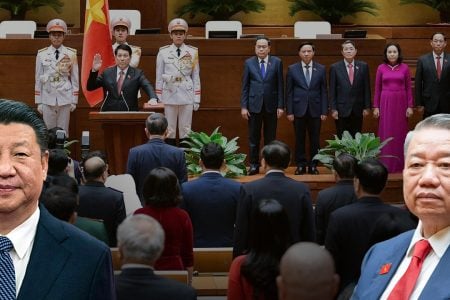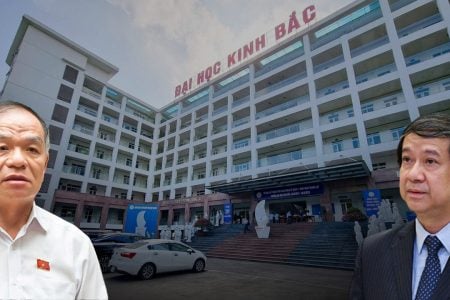
The government is discussing the construction of a north-south expressway, some sections of the route will be transformed from public-private partnership to public investment.
Earlier on May 29, the Politburo also held a meeting to agree on adjusting a number of projects from the form of public-private partnership to investment from the state budget.
Why is there such a conversion?
The reason given is to accelerate the implementation to contribute to economic growth in the context of the COVID-19 epidemic.
But I think the main reason lies in another that if not frankly admitted, the purpose of promoting economic development of the North-South expressway project will not be realized.
Looking back at industrialization
Elsewhere, the Knowledge Publisher recently released the book “Wealth and Poverty of Nations” by author David s. Landes.
The book briefly reviews the industrialization of early European countries and provides some valuable data on the construction of infrastructure for industrialization.
The author examines countries from west to east and realizes the increasing state intervention in the construction of industrial infrastructure.
In England during the industrialization period, businesses received nothing from the state, even the budget for canals and railways came from private investment.
In France, the French government also sought private businesses to build rail and refused to buy shares, but the government agreed to pay for the land and roadbed. The explanation for the aid amounted to about 18% of the total cost at the beginning of 1848, the reason given was that road would go to the state anyway after the concession period.
In Germany, the policy is interwoven, depending on the time and area of the railway project, there is a purely private project, the state can support by granting land along the railway, there is a project the state bought shares, then built, owned and operated.
In Russia the railway was built, owned and operated by the state. The author said about building the first route from Moscow to St. Petersburg, the king was suggested to choose the route. He took a ruler and drew a line between the two cities. But a fingertip was pulled out, so the road under construction had a twist.
In later countries, industrialization is no longer a private story of market forces, but rather a proactive initiative of governments.
Vietnam today
Currently, Vietnam is in the period of industrialization, industrial infrastructure is being promoted to build, including the North-South highway project.
As the economy goes back centuries, compared with the leading countries in industrialization, Vietnam has learned a lot of experience on infrastructure development for industrialization.
In 1994, the Law on Domestic Investment Promotion was issued with the purpose of attracting investment capital from domestic people and enterprises.
In 1998, the National Assembly amended the law and for the first time regulated the types of public-private cooperation between the state and enterprises, which included types of cooperation such as BOT transfer business construction contract and BTO business transfer, BT transfer construction contract.
This content is maintained up to the 2005 Investment Law.
By 2014, the Investment Law was divided into two documents, namely the Investment Law and the Public Investment Law, in which the law no longer specifies BOT, BTO and BT types.
Instead, the types of public-private partnership, referred to as PPP, are stipulated in Decree 63/2018 / ND-CP on guidelines for investment in the form of public-private partnership.
Many other types of cooperation between the state and businesses stem from the complicated development of the economy.
These are Business Own Operation (BOO), Service Transfer Lease (BTL), Build lease transfer Contract (BLT), Operation and maintenance Contract ( O&M).
Inadequate BOT policy
For many years, many new high-speed construction projects or road improvement projects have been carried out in the form of build-operation-transfer, or BOT for short.
Enterprises, after spending money on building a highway, have a right to build toll collection business. After a period of collecting all the initial expenses, they will hand it over to the State for management.
This is a proper and reasonable policy to mobilize social capital into developing industrial infrastructure absorbed from the industrialization history of many countries.
But the implementation process has made technical mistakes that adversely affect a proper investment mobilization method.
Recently, the Bac Giang – Lang Son road highway has been put into operation since the beginning of 2020.
Since this highway has been opened, I have traveled seven times on this route.
It is a fact that the road is deserted, the whole road is only a few cars running, the absence of trucks or contenner.
Most trucks and containers run along the old National Highway 1A, but if they go to the highway, they will lose VND8,100 per km, or about VND526,500 for 65 km of long distances.
Due to high fees, car owners and cargo owners accept to follow the old road.
The risk of failure
The North-South expressway has a temporary length of 2,000 km, if the provisional fee is VND1,000 per km, the entire route fee will be VND2 million, if the fee is VND2,000 per a kilometer, tje fee will be VND4 million for the whole road. That is for a 5-seater vehicle.
As for trucks or contenner, if the fee of VND5,000/km it will be VND10 million, the level of VND8,000 will be VND16 million.
As a result, tolls are larger than the cost of gasoline, the toll is so high that the highway makes less cars.
Thus, the initial purpose of the expressway construction is to shorten the time of transporting goods, increasing the efficiency of production and business, reducing the cost of export goods, increasing the competitiveness of the economy, which has not been achieved.
Therefore, this is the main reason why the Government and the Politburo decided to shift from public-private partnerships to public investment in some expressway sections.
This is intended to reduce the overall cost of the line, otherwise building the highway will not help the economy.
But other than that, is there anything else to do to speed up the economy?
About the cost of high speed construction, see
Van Don – Ha Long 4-lane highway has a length of about 60km, construction cost is about VND12 trillion, calculated at VND 200 billion/km.
And Bac Giang – Lang Son expressway consists of 2 components: The Highway 1 renovation component with a length of 110 km and the refreshing highway component with 4 lanes and two emergency stopping lanes with a length of 65 km. The total investment of the whole project is VND12.189 trillion. It is calculated that each km is less than VND200 billion (because there is a component to improve Highway 1).
Is the price moving around VND200 billion/km reasonable? Note that the land is already owned by the government, businesses only need to level the ground, cover the asphalt and reinforce the corridors on both sides.
Find out, the price is calculated based on Decision No. 1161 / QD-BXD 2015 of the Ministry of Construction on construction investment.
According to this document, the investment capital for building high-speed motorways for 4 lanes is about VND131 billion/km, and for 6-lane roads is about VND198 billion/km.
However, the two highways Van Don – Ha Long and Bac Giang – Lang Son with 4 lanes for investment are closer to the 6-lane highway, nearly VND200 billion for each kilometer long.
Where is the answer to this calculation? Are two emergency lanes counted as two lanes of traffic to create a six-lane highway?
Another inadequacy is that due to the participation of the state, besides the voluntary agreement element of the market, there are policies that define the framework of unit prices such as Decision No. 1161 / QD-BXD of Ministry of construction.
So if any business bid VND100 billion for every 4-lane highway, it is difficult to be accepted.
Because that would reveal that the provincial ministries were wrong to accept high unit prices for previous projects.
Thoibao.de (Translated)
























